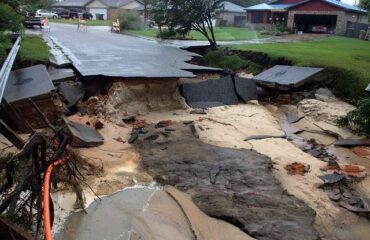After the storm, besides making temporary repairs, there are several steps you should take that will aid in the filing of an insurance claim.
Call All American Public Adjusters, Inc before you do anything! We can help guide you through this difficult time and process.
Make temporary repairs
- Make temporary repairs to prevent further weather related damage. Cover holes in the roof, walls, doors and windows with plastic or boards. Be careful not to risk your own safety in making the repairs.
- Save receipts for any material you buy. Your insurance company will reimburse you for the cost.
- Beware of building contractors that encourage you to spend a lot of money on temporary repairs. Remember that payments for temporary repairs are part of the total settlement. If you pay a contractor a large sum for a temporary repair job, you may not have enough money for permanent repairs.
- Don’t make extensive permanent repairs until after the claims adjuster has been to your home and assessed the damage.
- Avoid using electrical appliances, including stereos and television sets, that have been exposed to water unless they’ve been checked by a technician.
Call your insurance agent or insurance company
- Report the damage to your insurance agent or insurance company representative. Ask questions such as: Am I covered? Does my claim exceed my deductible? (Your deductible is the amount of loss you agree to pay yourself when you buy a policy.) How long will it take to process my claim? Will I need to obtain estimates for repairs to structural damage?
Save receipts for additional living expenses.
- Most homeowners policies cover additional living expenses such as food and housing costs, telephone or utility installation costs in a temporary residence, extra transportation costs to and from work or school, relocation and storage expenses and furniture rental for a temporary residence. Your insurance company will usually advance you money for these expenses. The payments will be part of the final claim settlement. Let your insurance company know where you can be reached so that the claims adjuster can give you a check.
- The maximum amount available to pay for such expenses is generally equal to 20 percent of the insurance on your home. So on a home insured for $100,000, up to $20,000 would be available. This amount is in addition to the $100,000 to pay for repairs or to rebuild your home. Some insurance companies pay more than 20 percent. Others limit additional living expenses to the amount actually spent during a certain period of time, such as 12 months, instead of a maximum percentage of the policy limit.
Preparing for the adjuster’s visit
The claims process may begin in one of two ways.
- Your insurance company may send you a claim form, known as a “proof of loss form,” to complete.
- An adjuster may visit your home before you’re asked to fill out any forms. (An adjuster is a person professionally trained to assess the damage.) Usually, the more information you have about your damaged home and belongings the faster your claim can be settled.
- Major disasters make enormous demands on insurance company personnel. Your adjuster generally will come prepared to do a thorough and complete study of the damage to your home. However, the large number of claims may place time restrictions on adjusters forcing them to “scope the loss.” If your adjuster doesn’t make a complete evaluation of the loss on the first visit, try to set up an appointment for a second visit.
- Be sure to keep copies of lists and other documents you submit to your insurance company. Also, keep copies of whatever paperwork your insurance company gives you.
Personal Belongings:
- Make lists of the damaged items. Include the brand names and model numbers of appliances and electronic equipment. If possible, take photographs of the damage. Don’t forget to list items such as clothing, sports equipment, tools, china, linens, outside furniture, holiday decorations and hobby materials.
- Use your home inventory or put together a set of records – old receipts, bills and photographs – to help establish the price and age of everything that needs to be replaced or repaired.
- If your property was destroyed or you no longer have any records, you will have to work from memory. Try to picture the contents of every room and then write a description of what was there. Try also to remember where and when you bought each piece and about how much you paid.
- Don’t throw out damaged furniture and other expensive items because the adjuster will want to see them.
Structure of Your Home:
- Identify the structural damage to your home and other buildings on your premises, like a garage, toolshed or in-ground swimming pool.
- Make a list of everything you would like to show the adjuster when he or she arrives. This should include cracks in the walls, damage to the floor or ceiling and missing roof tiles. If structural damage is likely even though you can’t see any signs of it, discuss this with your adjuster. In some cases, the adjuster may recommend hiring a licensed engineer or architect to inspect the property.
- Have the electrical system checked. Most insurance companies pay for such inspections.
- Get written bids from reliable, licensed contractors on the repair work. The bids should include details of the materials to be used and prices on a line-by-line basis.
Public Adjusters:
- Your insurance company provides an adjuster at no charge to you. You also may be contacted by adjusters who have no relationship with your insurance company and charge a fee for their services. These are known as public adjusters. You may use a public adjuster to help you in settling your claim.
- Public adjusters may charge you as much as 15 percent of the total value of your settlement for his or her services. The fee isn’t covered by your insurance policy. Sometimes after a disaster, the percentage that public adjusters may charge is set by the insurance department.
- If you decide to use a public adjuster, first check his or her qualifications by calling your state insurance department. Call All American Public Adjusters, Inc!



